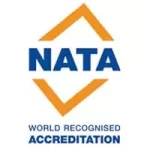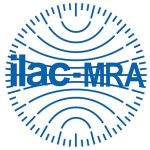
Calibration and Rentals
Ensuring precision and reliability for all your instruments to deliver consistent performance,
accurate results, and dependable functionality in every application.



Our Scope
Our highly trained personnel can calibrate tools, instruments, equipment, and systems for a diverse range of applications. With more than 20 years of experience, we have the skill and expertise to offer efficient turnaround, thorough attention to detail, and high-quality results that will give you peace of mind.
Want NATA Calibration? Get it done at TI
Territory Instruments attained ISO/IEC17025:2017 accreditation through NATA for its Calibration Laboratory located at its main office in Darwin. On-site calibrations can also be undertaken by our field technicians. Check out our NATA scope.
Contact Us
Territory Instruments attained ISO/IEC17025:2017 accreditation through NATA for its Calibration Laboratory located at its main office in Darwin. On-site calibrations can also be undertaken by our field technicians. Contact Us.
ISO 17025 NATA Accredited Calibration vs. Traceable Calibration
Calibration is a critical process in ensuring the accuracy and reliability of measurement instruments. When considering calibration services, organizations often face the choice between ISO 17025 accredited calibration and calibration that is merely traceable. This page outlines the advantages of opting for ISO 17025 accredited calibration services over traceable calibration.
ISO 17025 NATA Accredited Calibration
- High Quality Assurance: ISO 17025 accreditation is an internationally recognized standard for calibration laboratories. Labs accredited to ISO 17025 have met rigorous quality and competence requirements, which ensures the highest level of measurement accuracy and reliability.
- Technical Competence: Accredited labs employ trained and highly skilled personnel who are proficient in calibration techniques, measurement uncertainties, and associated technical aspects. Their expertise ensures precise and consistent results.
- Standardized Procedures: ISO 17025 mandates standardized calibration procedures, reducing the likelihood of errors and inconsistencies in the calibration process. This standardization enhances the repeatability and reproducibility of measurements.
- Equipment and Environment Control: Accredited labs maintain strict control over environmental conditions and equipment to minimize external factors affecting calibration. This results in more reliable and stable measurements.
- Documented Records: Accredited labs maintain comprehensive records, offering traceability and transparency in the calibration process. This documentation is invaluable for audits, compliance, and quality control.
Traceable Calibration
- Fundamental Traceability: Traceable calibration ensures that measurements can be traced back to national or international measurement standards. However, it may not guarantee the same level of measurement quality as ISO 17025 accredited calibration.
- Limited Oversight: Traceable calibration does not guarantee the same level of oversight, quality control, or expertise found in accredited laboratories. The process can vary from lab to lab, leading to inconsistent results.
- Lack of Formalized Standards: Traceable calibration lacks standardized procedures and strict adherence to documented quality management systems. This can result in variability in calibration processes.
- Lower Confidence in Results: Organizations relying solely on traceable calibration may have less confidence in the accuracy and reliability of their measurements, which can impact the quality of their products or services.
Conclusion
In conclusion, ISO 17025 accredited calibration offers numerous advantages over traceable calibration:
- Accredited calibration laboratories adhere to stringent quality and technical competence standards, ensuring the highest measurement accuracy and reliability.
- While traceable calibration provides a basic level of measurement assurance, ISO 17025 accreditation guarantees a higher level of quality, expertise, and standardized procedures.
- For organizations seeking precise and consistent measurements with full confidence in their results, ISO 17025 accredited calibration is the superior choice.
- It not only ensures regulatory compliance but also contributes to the overall quality and reliability of their products and services.
- The efficiency and validity of lab processes are audited and checked.
- ISO17025 imparts a strong Impartiality ethos through standardised processes and methods.
- The results International acceptance of results.
Who is ILAC MRA?
ILAC stands for the International Laboratory Accreditation Cooperation. It is an international organization that promotes the global acceptance of accredited testing, calibration, and inspection services. ILAC plays a crucial role in facilitating international trade by establishing mutual recognition arrangements (MRAs) between accreditation bodies from different countries. These MRAs ensure that the results of tests, calibrations, and inspections conducted by accredited laboratories in one country are recognized and accepted by other countries, thus reducing the need for retesting or recalibration when products or services cross borders.